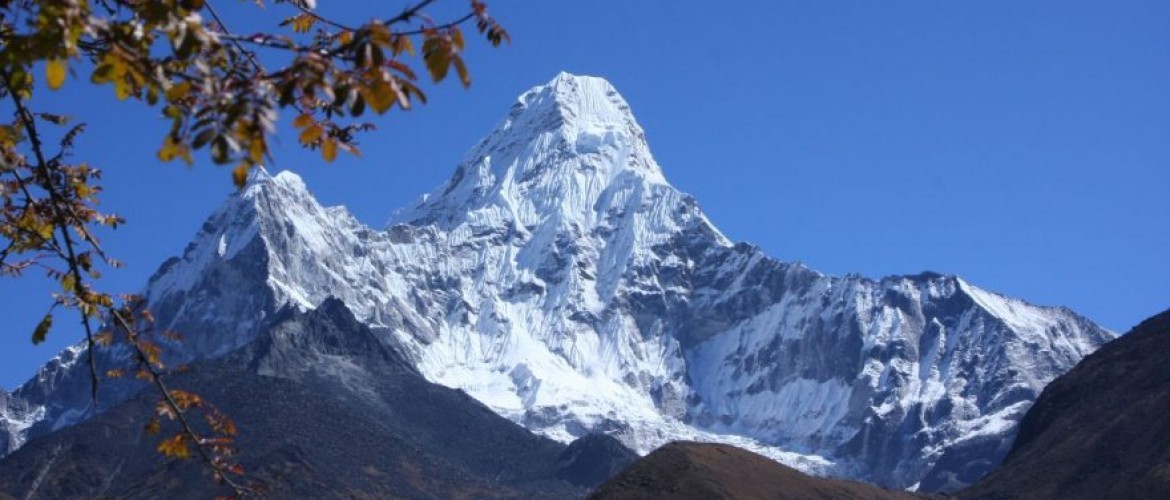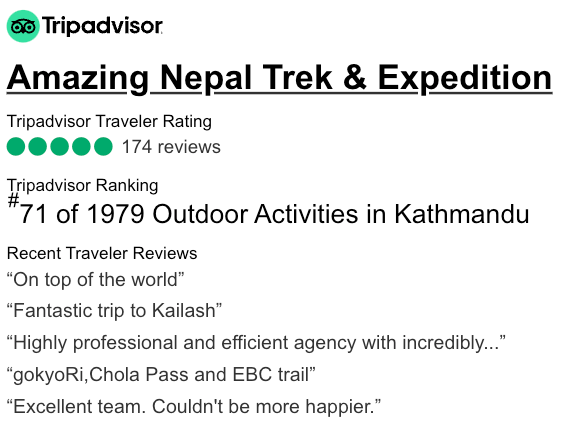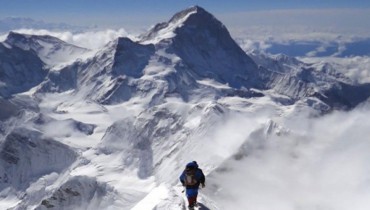If you want to book a Amadablam Expedition with Amazing Nepal Trek and Expedition and still wondering about the essential equipment for your Expedition Campaign, here we are more than happy to offer our checklist for your references. Please make necessary amendments to our checklist as per your need and convenience. For some case, if you couldn’t get any of these listed equipment/gears in your hometown or you’re in a rush before you fly to Kathmandu, don’t worry! The listed necessary items mentioned below can be easily purchased here.
Except for your daypack, the porters and yaks carry all your heavy gears and luggage. While Trekking from Lukla, you can wear a T-Shirt and trousers. You will need your down jacket around base camp until the sun hits camp after breakfast. Above the Base Camp, carry also ice axe, crampons, sleeping bag, snacks in your rucksack. The Sherpas will carry other heavy items and gears in the mountain.
Below is the checklist of equipment that is required for the trek/climb:
Climbing Gear
Ice Axe: A 60 cm length is probably the most useful length. Bring a lightweight axe with a pick that will stick easily in hard glacier ice (for example the Petzl Sum-Tec Mountaineering Ice Axe). Attach a lightweight wrist leash that is usable for climbing steeper terrain. The summit day is a consistent 40 degrees, so a shorter axe is necessary.
12-point Crampons: These must be sharp and must fit your boot perfectly.
Climbing Harness: Make sure the buckle is easy for you to thread in cold conditions! Gear loops will be useful for this trip as well as adjustable leg loops.
Climbing Helmet: Required. Be sure you can comfortably fit a warm hat underneath.
Hardware: Bring 3 locking and 4 lightweight regular carabiners. It is helpful if at least one of the locking carabiners has a "key gate", like the Petzl Attache. Bring one handled ascender and one Petzl Tibloc for ascending the fixed rope. You will need rigging material — two sewn 48" nylon slings and 10' of 8 mm perlon should be sufficient. Also, include one small 5 mm prussik loop (about 4 feet of cord tied with a double fisherman's knot) for a rappel backup. For rappelling the Black Diamond ATC Guide is good since it can handle ropes from 7.7mm to 11mm. A Figure 8 is an old standby and works on a variety of ropes and also icy ropes. While it twists the ropes more, it is quite foolproof. You might consider both, in case you drop one of them and lose it.
Backpack & Sleeping Bag
Climbing Backpack: Medium size internal frame pack (60-liter capacity). Look for a pack which is comfortable to carry, very durable, as light as is reasonable and one which has a minimum number of bells and whistles.
Sleeping Bag: Bring a sleeping bag comfortable to -20°F. Down is lighter and much more compressible. Be sure to bring a compression stuff sack. Keep in mind that many of your nights will be much warmer than -20, especially on the trek into base camp.
Sleeping Pads: Bring one RidgeRest or Thermarest pad. A stuff sack helps prevent punctures.
Camp Accessories
Headlamp: Bring a good LED headlamp with 2 sets of lithium batteries for cold conditions. I'd recommend the Petzl MYO RXP.
Water Bottles: 2 wide-mouth plastic water bottles with insulated covers. A small Thermos bottle is great for cold mornings.
Water Treatment: Iodine tablets (Potable Aqua or similar) or iodine crystals (Polar Pure). One bottle of Potable Aqua (enough to treat 25 liters) should be more than sufficient.
Utensils: Bring an insulated mug with a lid, a decent-sized bowl, spoon, pocket knife and lighter. You are better to bring lighters from the US. TSA says you can carry them on, or pack two in a DOT approved case. Kathmandu lighters are not very good.
Footwear
Double Climbing Boots with expedition liners. Make sure your crampons can be adjusted to fit them! The newer insulated boots like the Scarpa Phantom 6000, or the La Sportiva Spantik, are ideal for the climb — they climb well enough on the rock sections to Camp 2 and are warm enough for up high.
Approach boots. A good example is the La Sportiva Trango S, which will work on the trek and approach to Camp 1, and even up to Camp 2 if conditions warrant.
Gaiters and Yaktrax or Kahtoola Microspikes in case of snow.
Socks: Four sets of climbing socks.
Clothing
Insulated Parka: Heavyweight insulated expedition parka with hood.
Shell Jacket: Lightweight waterproof-breathable construction with a hood.
Pants: Lightweight waterproof-breathable shell pants or bibs with full-length leg zippers (so they can be put on over boots/crampons). ALSO, insulated pants with full-length zippers for evenings and cold summit days (either down pants OR synthetic insulation full-zip pants like Mountain Hardwear Compressor Pants). Down suits will work but can be heavier and bulkier to carry in your pack.
Mid Layers: Fleece or Soft Shell layering pieces that work well with the rest of your clothing. A Soft Shell jacket and an expedition weight longjohn top will work well.
Climbing Pants: Look for construction that provides freedom of movement and/or stretch materials. The fabric should be a breathable synthetic that preferably holds up to abrasion. I'd recommend a Schoeller fabric climbing pant for general use and zippered fleece pants for the summit push.
Base Layers: 2 synthetic tops and 1 bottom. Zip neck tops are the way to go.
Outerwear Accessories
Mittens: Fleece mittens with an over mitten. Nothing competes with a mitten for warmth when the going gets tough.
Ski Gloves: A warm insulated glove with leather palm will be worn a lot of the time.
Light Gloves: Polypropylene or fleece. Leather palms handle the fixed-line better.
Leather gloves or good abrasion resistant climbing glove for the rock sections.
Stocking Hat: Wool or fleece stocking hat with ear protection.
Neck Gaiter and/or a Buff (highly recommended).
Baseball hat and Bandana.
Personal Accessories
Eyewear: Bring good sunglasses with side protection. For contact lens wearers, ski goggles with light color lenses (for use at night) might be useful in windy conditions. The ski goggles are essential for all climbers in really stormy conditions and can serve as an emergency back up for broken or lost sunglasses.
Vision correction: Bring extra prescription eyeglasses or contact lenses if you wear them. Lens solutions are not widely available in Nepal, bring enough for the duration.
Wrist Watch: With alarm and night light. An altimeter watch is useful.
Basic First Aid: Hand sanitizer (Purell), moleskin or Compede, athletic tape, aspirin (some climbers take a baby aspirin every day up high) and/or ibuprofen/acetaminophen, Imodium, Band-Aids, antacid, insect repellant, earplugs, and two rolls of toilet paper in quart Ziploc bags (we will have a supply at Base Camp), small towel, soap/shampoo.
Skin Care: Sunblock lotion (at least #30 protection factor — have at least one smaller tube (1 oz) that can fit in your pocket) and lip salve. Put your lip protection on a string and hang it from your neck. That way you'll use it. It also works great for your nose.
Garbage Bags: 2 or 3 large plastic bags make great liners for your pack in wet weather.
Personal Snack Food: The food is great on the trek but you might enjoy a few snacks (not more than 5 pounds) from home and also some drink mixes if you like these to add to your water bottle (let the iodine have 30 minutes contact time before adding). Summit climbers should bring some high altitude snacks they prefer for hard days, approximately 10 pounds including a drink mix like Cytomax. Include a number (10-20) of Gu, Power Gel or similar for the upper route.
MP3 Player and Books. Plan on sharing books with the Base Camp Library we establish every year.
Pee Bottle
Chemical Hand Warmers (6)
Prescription Medications:
Please consult your doctor.
Travel Items
Duffel Bags: We normally pack all our equipment in two large duffel bags. Make sure they are well labeled with indelible ink as well as a travel tag. The duffels go on the trek/climb with you and will be carried by porters and yaks. Expect for them to get wet and muddy, so rugged, waterproof duffels are good. Bags with wheels are nice for the airport, but the porters and yaks don't like to carry them, so don't bring wheeled bags (or at least not two of them). You will also store some travel clothes at the hotel in Kathmandu while trekking, so a small additional bag with a lock might be handy. You'll want padlocks, but for flying out of the USA, it might be better to use plastic zip ties which can be cut by TSA staff if necessary (bring extra zip ties). Tip: Bring 5 large plastic garbage bags to pack gear inside duffels to protect gear from rain.
Daypack: A smaller rucksack makes a great carry-on bag for your flight and is useful during the trek.
Travel Wallet: Some type of secure travel wallet is a must. Remember a pen for travel documents.
Passport (valid for at least 6 months after the trip ends with sufficient extra pages for visa stamps and in the same name as airline ticket (or with endorsement-for women who changed name w/ marriage). It is easy to get your Nepal visa on arrival in Kathmandu at the airport... bring a passport photo. Bring a copy of the information pages and a couple of extra passport photographs. Carry these in a separate location. You'll be glad you did if you ever lose a passport.
Camera: with spare batteries, and film or memory cards, but keep it reasonable in size and weight. Consider a small USB drive to make it easy to share photos with your teammates.
Casual Clothes: For travel/meals in dining rooms. You'll want a shirt or two with a collar to wear on flights and for restaurants. A sweatshirt or light jacket might be nice in the evening. Tip: Keep your travel clothing modest, please do not wear short shorts and skimpy tops, the locals take offense.
Bathing Suit: Some of the hotels have pools (eg, in Kathmandu). Trekking Gear
Trekking Poles: Poles come in handy for balance and easing impact to your knees. Get collapsible poles that can attach to your backpack and fit into your duffle.
Backpack: You may choose to bring a smaller "daypack" for your airline travel carry on, and this can be used on the trek if you want to carry a smaller (35 liter or so), light trekking pack. You need a pack big enough for your clothes, water, camera, food, etc during the day.
Pack Cover: Waterproof rain cover for your trekking pack.
Tip: Bring 5 large plastic garbage bags to pack gear inside duffels to protect gear from rain.
Trekking Clothes: Light hiking pants and/or hiking shorts for warm weather down low- NOT cotton. Shirts for hiking on nice days (t-shirts OK, quick-drying synthetic fabric is better.) Don't overdo your trekking clothes. A pair of shorts, long pants and a couple of shirts will do. You can hand wash them during the trek as needed.
Lightweight Approach Boots: Find a pair that fits and log some miles in them before your trip. A low-cut shoe is adequate, but some hikers will prefer more ankle support.
Sleeping Bag: Climbers will make due with their expedition bag, trekkers only can get by with a lighter bag rated to 10°F.
Sleeping Pad or Thermarest (one light one is sufficient, you will be provided a thick open cell foam "trekking mattress".







